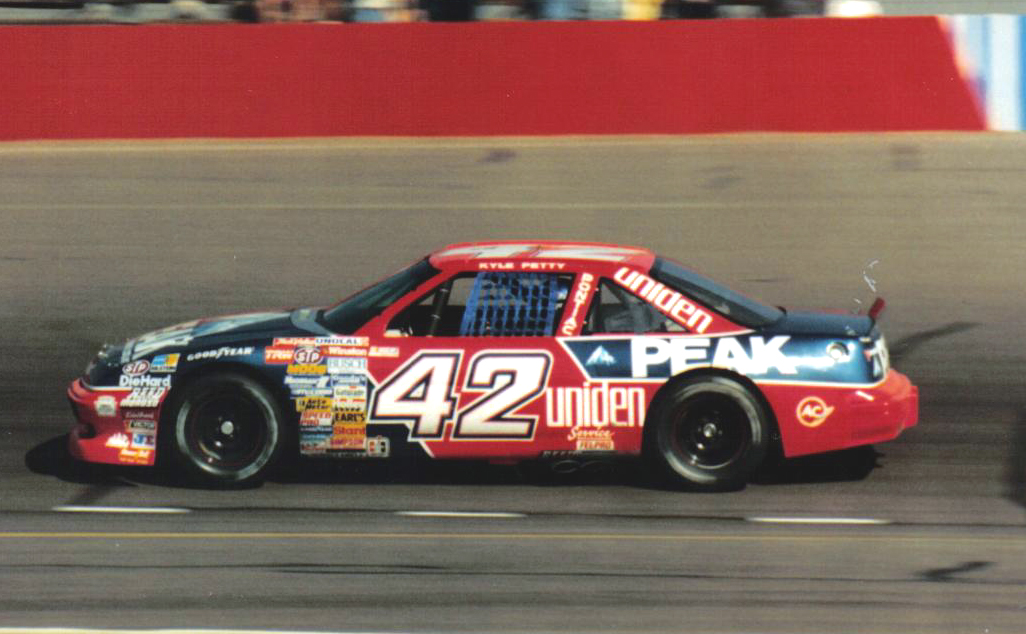
We’ve all been there, right? You’re cruising along, feeling incredibly cool in a car that, at the time, felt like the absolute peak of automotive awesomeness. Fast forward a decade or two, and that same ride rolls by, not with a triumphant roar, but with a subtle groan from everyone who sees it. What once made you feel like the coolest cat on the block now sends a shiver down your spine, leaving you muttering, “Oh, wow, I *actually* liked that?” Yep, those days are long gone for many vehicles that once ruled the asphalt.
It’s truly wild how quickly automotive trends can shift, turning yesterday’s must-have into today’s head-scratcher. What seemed cutting-edge, stylish, or just plain *cool* back then now makes people full-on cringe when they catch a glimpse. We’re talking about a lineup of cars that, bless their hearts, just couldn’t stand the test of time, becoming undeniable symbols of questionable taste. They’ve utterly lost their magic, transforming into vehicular punchlines.
So buckle up, buttercups, because we’re about to take a hilarious, slightly nostalgic, and utterly cringe-inducing journey down memory lane. We’re shining a spotlight on 15 cars that once had us convinced they were IT, the moment, the main event. Get ready to confront your past automotive choices, because trust us, you’re definitely going to recognize a few of these former road warriors that have utterly failed the cool test.
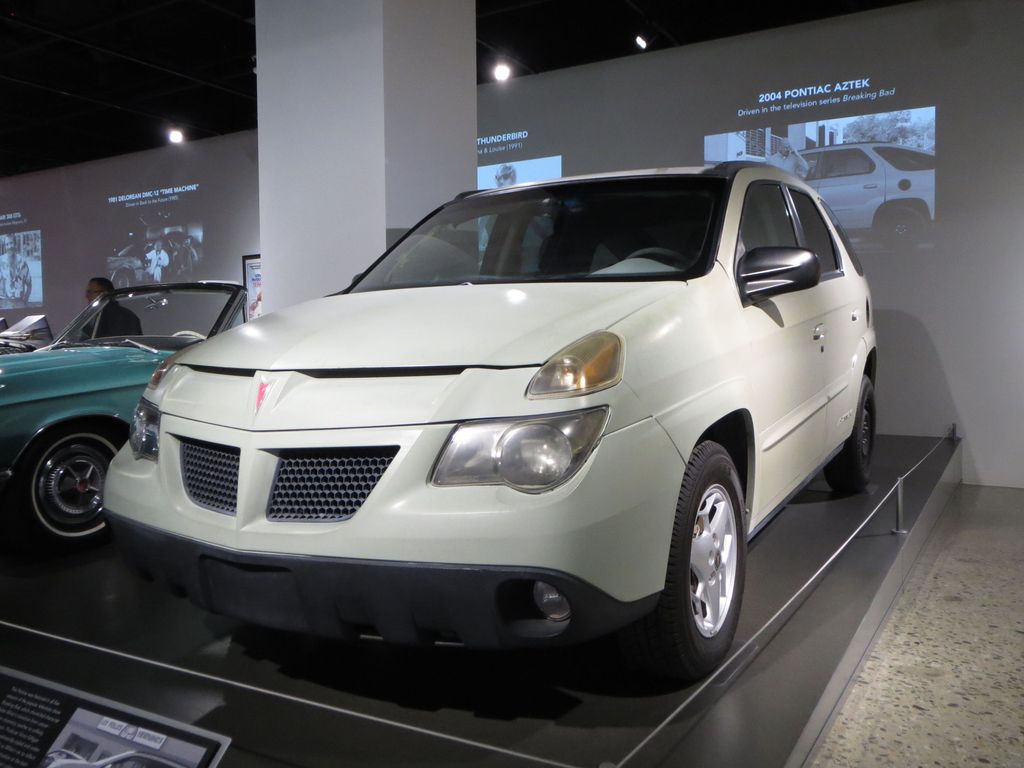
1. **Pontiac Aztek**Let’s just get this one out of the way first. The Aztek is practically the poster child for “what were they thinking?” When it debuted in 2000, critics and consumers alike lambasted its confused identity. It looked like someone took a regular SUV, gave it an identity crisis, and then hit it with a hammer from every angle. General Motors thought they were being super modern with all those weird plastic panels and bizarre angles.
Instead, they created something that looked like a spaceship designed by someone who had never seen a spaceship. The mashup of ideas never quite gelled, resulting in a vehicle that was instantly polarizing. People were just confused by its lumpy proportions and bizarre rear end.
Sure, it had some cool features like a built-in tent and camping gear. It tried to be the ultimate adventure mobile! But nobody cared. The sheer audacity of its looks was too much to handle for most, overshadowing any practical merits. It’s hard to enjoy a built-in tent when your car is constantly judging your life choices.
Car Model Information: 2005 Pontiac Aztek Base
Name: Pontiac Aztek
Manufacturer: General Motors
Production: July 2000 – December 2004
Assembly: Ramos Arizpe
Designer: Tom Peters (chief designer: 1997)
Class: Mid-size crossover SUV
BodyStyle: SUV
Platform: GM U platform
Related: Buick Rendezvous
Layout: Front-engine, front-wheel-drive layout
Engine: General Motors 60° V6 engine#LA1,V6
Transmission: GM 4T65-E transmission,Automatic transmission
Wheelbase: 108.3 in (2,751 mm)
Length: 182.1 in (4,625 mm)
Width: 73.7 in (1,872 mm)
Height: 66.7 in (1,694 mm)
Weight: 3,779–4,043 lb (1,714–1,834 kg)
Predecessor: Pontiac Sunrunner
Successor: Pontiac Torrent
ModelYears: 2001–2005
Categories: All-wheel-drive vehicles, All articles needing additional references, All articles with unsourced statements, Articles needing additional references from October 2013, Articles with short description
Summary: The Pontiac Aztek is a mid-size crossover SUV marketed by General Motors introduced in 2000 for the model years 2001 through 2005. As a four-door crossover with front-wheel drive and optional all-wheel drive, the Aztek featured a four-speed automatic transmission with a V6 engine. Marketed by Pontiac as a “sport recreational vehicle,” the Aztek used a shortened platform shared with GM’s minivans (e.g., the Pontiac Montana) featuring 94 cubic feet of cargo room with its rear seats removed. The design employed conventional rear outswing doors rather than sliding doors, and a split rear tailgate, the lower section formed with seat indentations and cupholders. Other features included a front center console that doubled as a removable cooler, optional rear stereo controls in the cargo area, optional sliding cargo floor with grocery compartments, and optional camping package with an attachable tent and air mattress.
Get more information about: Pontiac Aztek
Buying a high-performing used car >>>
Brand: Pontiac Model: Aztek
Price: Not Priced Mileage: 129,777 mi.
Read more about: From Punchlines to Legends: These Weird Classic Cars Should Never Have Been Cool, But Totally Are!
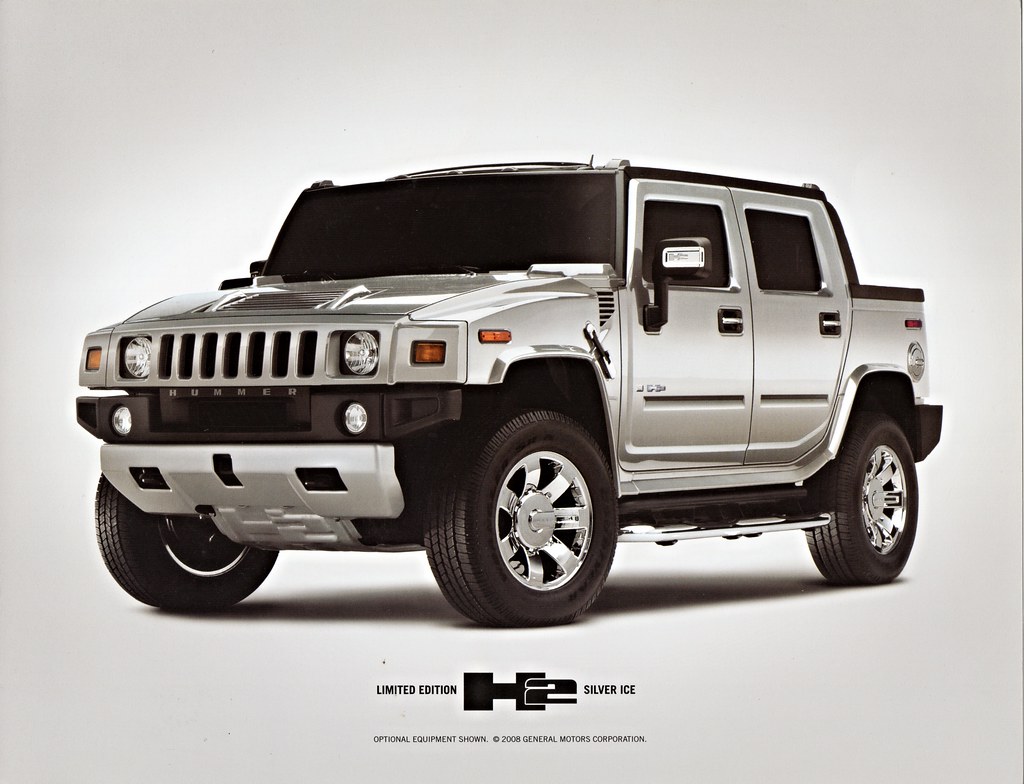
2. **Hummer H2**Ah, the early 2000s – a simpler time when gas was cheap and everyone wanted to look like they were embarking on a military expedition. The Hummer H2 was *the* vehicle if you wanted to look tough and ready for anything. It was a statement, an automotive flex that screamed “I have arrived, and I consume a lot of fossil fuels doing it.” Gas prices were lower then, so people didn’t mind getting eight miles per gallon.
The massive size made parking a nightmare, but owners felt powerful sitting up high. Towering over lesser vehicles, it was all about that commanding presence and feeling of invincibility. It definitely fulfilled the fantasy of driving a tank on suburban streets.
Now, however, the H2 tells a different story. It screams “wasteful and impractical.” With heightened climate change awareness and soaring gas prices, these gas-guzzling monsters look like selfish, outdated relics. Most owners never even took them off-road anyway, making the tough-guy image seem entirely fake and try-hard.
Car Model Information: 2003 Hummer H2 Base
Name: Hummer H2
Manufacturer: AM General
Production: 2002–2009
ModelYears: 2003–2009
Assembly: Mishawaka, Indiana,Kaliningrad,designer = Clay Dean (2000)
Class: Full-size SUV
BodyStyle: Sports utility vehicle,pickup truck
Platform: GMT800
Related: Chevrolet Silverado,Chevrolet Avalanche,Chevrolet Tahoe,Chevrolet Suburban,Cadillac Escalade
Layout: Front-engine, four-wheel-drive layout,four-wheel drive
Engine: General Motors LS-based small-block engine#LQ4
Transmission: 4L60E,4-speed 4L65E automatic (2005–2007),automatic transmission
Wheelbase: 122.8 in
Abbr: on – 6.2 L
Length: 203.5 in
Width: 81.3 in
Height: 2002–03: {{convert,77.8,in,mm,0,abbr=on
Weight: {{convert,6400,lb,kg,0,abbr=on
Categories: 2000s cars, AM General vehicles, All-wheel-drive vehicles, All articles needing additional references, Articles needing additional references from January 2024
Summary: The Hummer H2 is a full-size off-road sport utility vehicle (SUV) that was marketed by Hummer and built in the AM General facility under contract from General Motors from 2002 until 2009. It is based on a modified GMT820 GM three-quarter-ton pickup truck in the front and a half-ton 1500 frame in the rear. A four-door pickup truck version with a midgate that opens the vehicle’s interior to the external cargo bed was introduced for the 2005 model year as the H2 SUT (sport utility truck).
Get more information about: Hummer H2
Buying a high-performing used car >>>
Brand: Hummer Model: H2
Price: $13,980 Mileage: 152,679 mi.
Read more about: Beyond 250,000 Miles: 14 Indestructible SUVs That Define Automotive Longevity
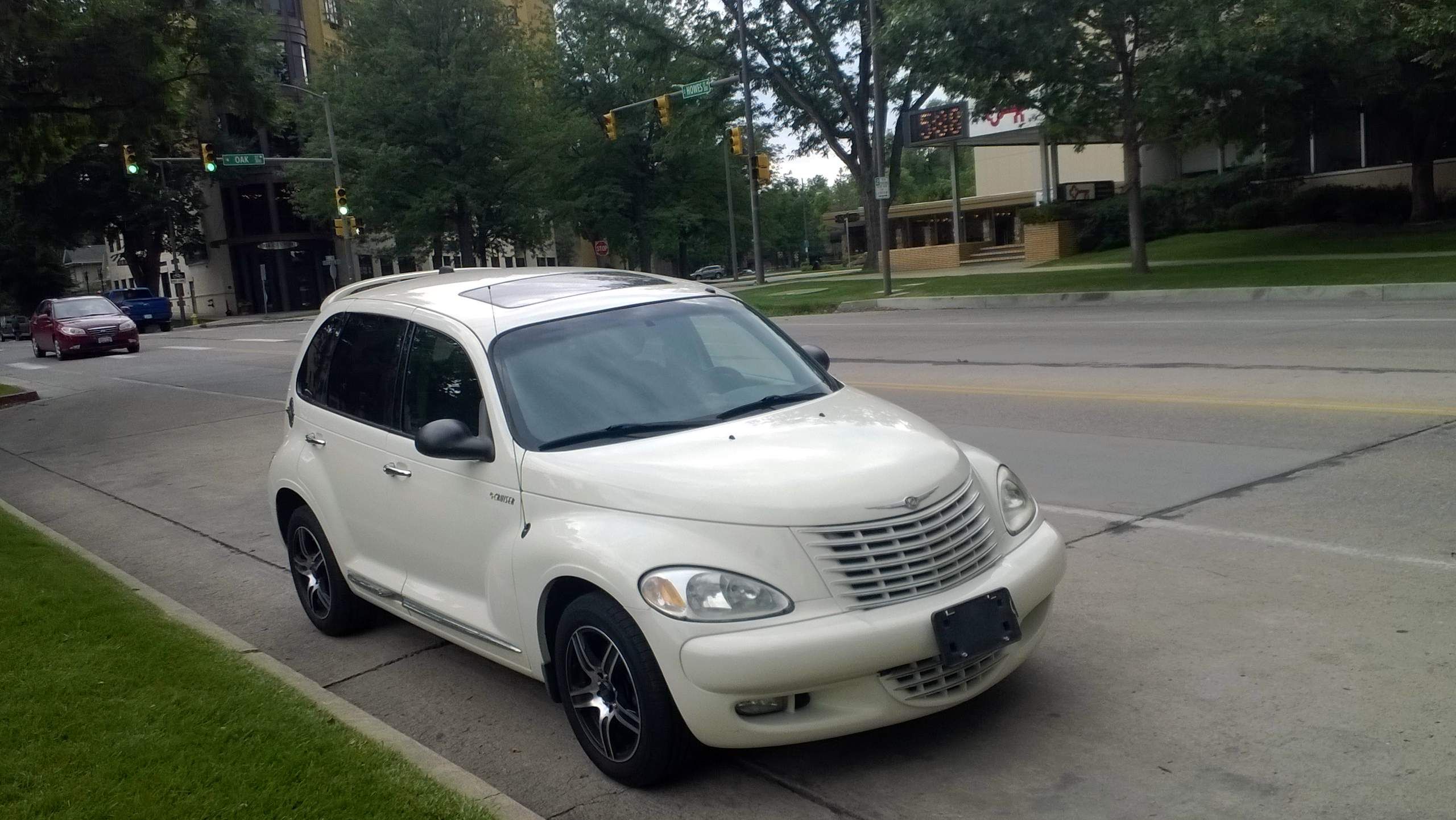
3. **Chrysler PT Cruiser**The Chrysler PT Cruiser truly tried to make a splash by dipping its toes into the past. Chrysler attempted to revive the charming, distinctive vibe of 1930s-era wagons with this retro-styled beauty. For a brief, glorious moment, people were on board! At its launch, it was seen as cute, quirky, and refreshingly different from the sea of boring cars. Marketing made it seem like the perfect car for creative, fun-loving people.
Beyond its polarizing looks, the PT Cruiser had some practical features. We’re talking about abundance of cargo space and removable seats, making it surprisingly versatile. It could serve many purposes, even if its looks were debatable.
But, the novelty wore off fast. Once the initial “ooh, shiny!” factor faded, people realized that beneath that eccentric costume, it was just a regular economy car. The build quality was poor, and what initially seemed charming quickly became annoying and dated. Now, it looks like a failed, desperate attempt at being quirky.
Car Model Information: 2018 Honda Civic EX
Name: Chrysler PT Cruiser
Manufacturer: Chrysler
ModelCode: PT,PG
Production: 2000–2010
ModelYears: 2001–2010
Assembly: Toluca
Designer: Bryan Nesbitt
Class: Compact car
BodyStyle: convertible
Platform: Chrysler PT platform
Related: Dodge Neon
Predecessor: Dodge Neon
Successor: Lancia Delta#Third generation
Layout: Front-engine, front-wheel-drive layout
Engine: ubl
Transmission: Ultradrive#40TE
Wheelbase: 103 in
Abbr: on
Length: 168.8 in
Width: 67.1 in
Height: 63 in
Weight: 3123 lb
Categories: 2010s cars, All articles with unsourced statements, Articles with short description, Articles with unsourced statements from March 2018, Cars discontinued in 2010
Summary: The Chrysler PT Cruiser is a compact car that was built by the American company Chrysler from 2001 until 2010. Introduced as a five-door hatchback wagon, a two-door convertible variant was also made from 2005 until 2008.
Originally planned as a Plymouth model, the PT Cruiser was ultimately marketed as a Chrysler when Plymouth was discontinued. Intended to invoke 1930s aesthetics, the exterior of the PT Cruiser was designed by Bryan Nesbitt. The model received an intermediate facelift for the 2006 model year. Interior packaging was noted for its high roof, high h-point seating, and flexible cargo and passenger configurations enabled by a multi-level rear cargo shelf and rear seats a user could fold, tumble, or remove.
The PT Cruiser was produced in Mexico and Austria at the Toluca Car Assembly and Eurostar Automobilwerk factories respectively. By the end of production in July 2010, worldwide production had reached 1.35 million.
In its nameplate, PT stands for “Personal Transport” or “Personal Transportation”. PT was the PT Cruiser’s product code for the Mexican-made units.
Get more information about: Chrysler PT Cruiser
Buying a high-performing used car >>>
Brand: Chrysler Model: PT Cruiser
Price: $19,974 Mileage: 64,299 mi.
Read more about: Buyer Beware: These 10 Popular Cars Are Known Money Pits After 100,000 Miles, According to Automotive Experts
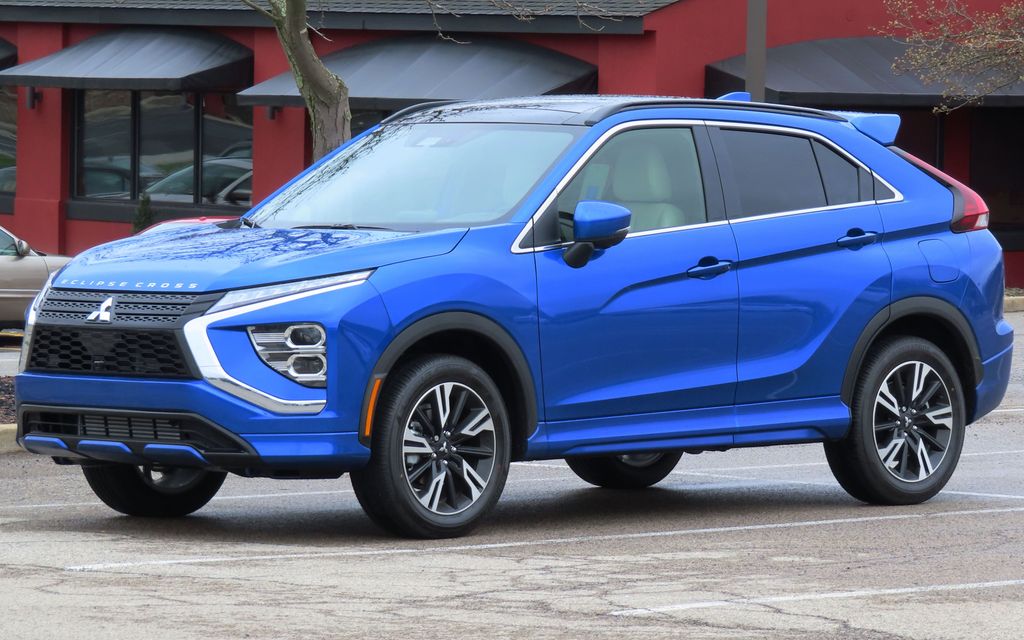
4. **Mitsubishi Eclipse (4th Generation)**Let’s talk about the Eclipse, specifically the 4th generation. This one really stings for anyone who remembers its glory days. The original Mitsubishi Eclipse was a legitimate, bona fide sports car, capable of actual speed and serious street cred. Young people adored its sleek design and those sweet turbocharged engines, making them feel like street racers. It was iconic.
Then, something truly puzzling happened. Mitsubishi, in an act of automotive self-sabotage, decided to take everything that made the Eclipse special and throw it out the window. They transformed it into a heavy, slow convertible that looked more like a leisurely luxury cruiser. They kept the iconic Eclipse name, but completely jettisoned its spirit and performance.
Early *Fast and Furious* movies propelled the original Eclipse into the stratosphere of cool. But the later versions? They were embarrassing. The fake sporty styling fooled nobody, and the performance was terrible. Driving one now makes people think you probably don’t know a single thing about cars.
Car Model Information: 2007 Mitsubishi Eclipse Spyder GS
Name: Mitsubishi Eclipse
Caption: Fourth-generation Mitsubishi Eclipse GS coupe
Manufacturer: Mitsubishi Motors
Production: 1989–August 2011 (906,876 units)
ModelYears: 1990–2012
Assembly: Normal, Illinois
Class: Sports car
BodyStyle: liftback,coupé
Layout: Front-engine, front-wheel-drive layout,Front-engine, four-wheel-drive layout
Predecessor: Mitsubishi Cordia,Mitsubishi Starion
Categories: 1990s cars, 2000s cars, 2010s cars, All-wheel-drive vehicles, All articles with unsourced statements
Summary: The Mitsubishi Eclipse was a sport compact car manufactured and marketed by Mitsubishi over four generations in the 1990–2012 model years. A convertible body style was added during the 1996 model year.
The first two generations were marketed simultaneously as rebadged variants, including the Eagle Talon and Plymouth Laser — and were a byproduct of Mitsubishi Motors and Chrysler Corporation’s close alliance. Their partnership in turn gave rise to Diamond-Star Motors (DSM). In Japan, the first two generations were sold at a specific Japanese retail chain called Mitsubishi Car Plaza. The third, 2000–2005 generation shared an extended wheelbase variant of their platform with the Chrysler Sebring and Dodge Stratus. In May 2005, the fourth, and final generation Eclipse was introduced, replacing the Chrysler platform used for the third generation with the PS platform.
According to Mitsubishi, the Eclipse was named after an unbeaten 18th-century English racehorse that won 18 races in a row and then retired.
At the end of August 2011, the final Eclipse was manufactured and auctioned for charity.
In 2017, Mitsubishi resurrected the Eclipse name on a compact crossover vehicle, called the Eclipse Cross.
Get more information about: Mitsubishi Eclipse
Buying a high-performing used car >>>
Brand: Mitsubishi Model: Eclipse
Price: $5,500 Mileage: 115,000 mi.

5. **Chevrolet SSR**Oh, General Motors, you really swung for the fences with this one. The Chevrolet SSR was an audacious attempt to create a pickup truck that could magically transform into a convertible. On paper, the concept sounded amazing – the fun of a sports car combined with the utility of a truck! It was touted as the best of both worlds.
The SSR’s retro styling was a nostalgic nod, designed to evoke classic hot rods from the 1950s. Marketing promised a vehicle perfect for weekend adventures and showing off at car shows. It was meant to be a head-turner, a conversation starter, and a unique expression.
Well, reality hit hard. People quickly realized the SSR was terrible at being both a truck *and* a sports car. The truck bed was comically tiny, and the performance was utterly disappointing. The styling, which aimed for retro-cool, ended up looking cartoonish and awkward. Now, it just seems like an incredibly expensive toy that nobody actually needed or wanted.
Car Model Information: 2005 Chevrolet SSR Base
Name: Chevrolet SSR
Manufacturer: Chevrolet
Production: 2003–2006
ModelYears: 2003–2006
Assembly: Lansing, Michigan
Class: Pickup truck
BodyStyle: ubl
Platform: GMT360
Related: ubl
Layout: Front-engine, rear-wheel drive layout
Engine: ubl
Transmission: ubl
Wheelbase: 116.0 in
Abbr: on
Length: ubl
Width: 78.6 in
Height: ubl
Designer: ubl
Categories: All articles needing additional references, All articles with unsourced statements, Articles needing additional references from July 2008, Articles with short description, Articles with unsourced statements from August 2023
Summary: The Chevrolet SSR (Super Sport Roadster) is a retro-styled and retractable hardtop convertible pickup truck manufactured by Chevrolet between 2003 and 2006.
During the 2003 and 2004 model years, the SSR used General Motors’ 5.3 L 300 hp (224 kW; 304 PS) Vortec 5300 V8. Performance was 7.7 seconds for 0–60 mph (0–97 km/h) with a 15.9 second 1⁄4 mile (402.3 m) time at 86.4 mph (139.0 km/h).
For the 2005 model year, the SSR used the 390 hp (291 kW; 395 PS) LS2 V8 engine also used in the C6 Corvette, Trailblazer SS, and Pontiac GTO, now offering a manual transmission option, the six-speed Tremec, for the first time. Performance improved dramatically with the LS2; the 6-speed manual version had an advertised 0–60 mph (97 km/h) acceleration time of 5.29 seconds. In addition, GM badges were added to the vehicle.
For 2006, output of the LS2 increased to 395 hp (295 kW; 400 PS).
Get more information about: Chevrolet SSR
Buying a high-performing used car >>>
Brand: Chevrolet Model: SSR
Price: $44,895 Mileage: 22,005 mi.
Read more about: Beyond 250,000 Miles: 14 Indestructible SUVs That Define Automotive Longevity
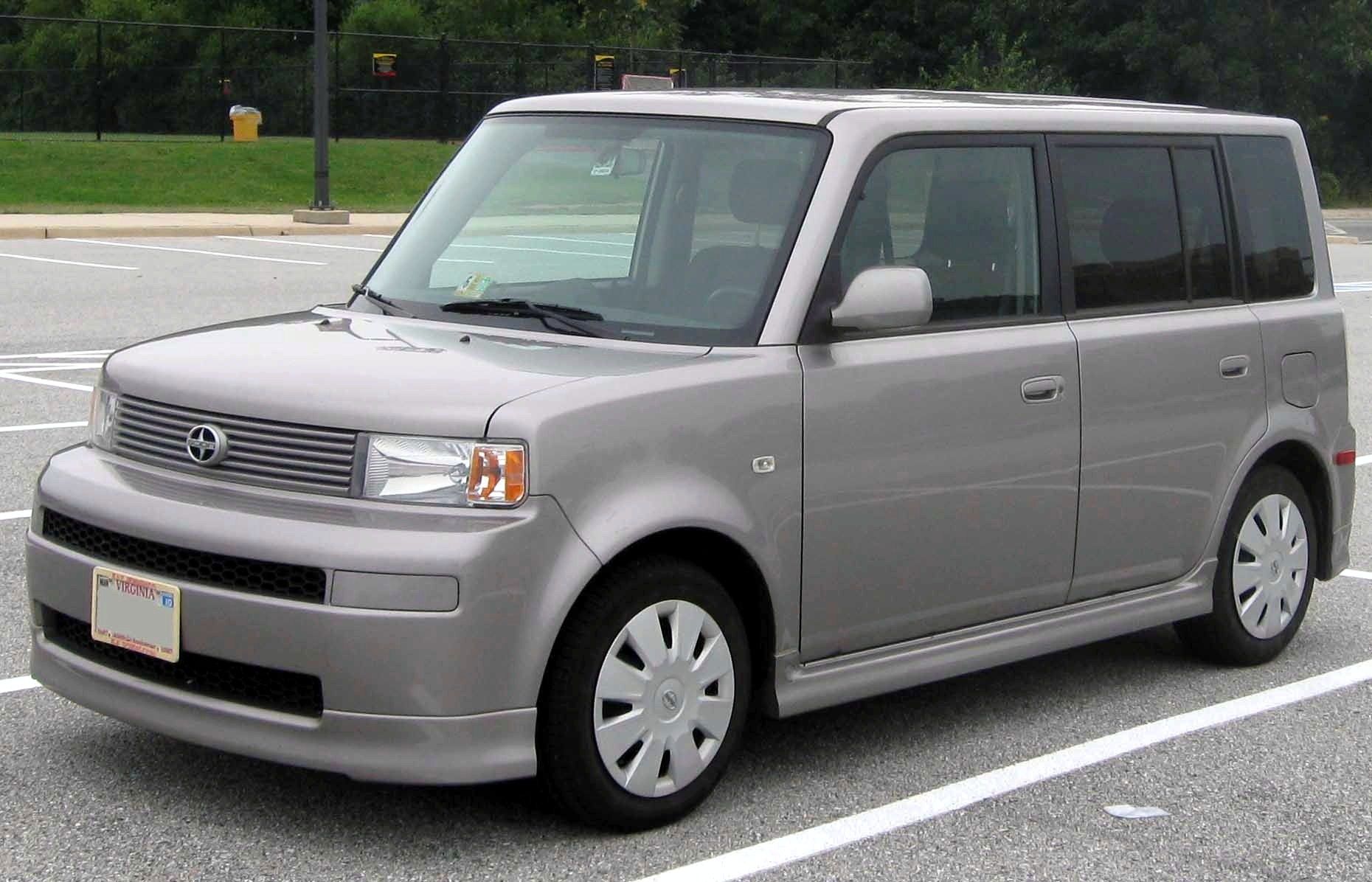
6. **Scion xB**When Toyota launched Scion, their mission was clear: attract young, hip buyers with designs that dared to be different, often leaning towards the wonderfully weird and boxy. The Scion xB was the flagship of this movement, envisioned as the ultimate expression of individuality – a car for those who proudly declared they didn’t care about traditional automotive beauty. Hip-hop artists embraced its unusual shape.
The spacious interior and cheap price made it popular with college students and urban dwellers. It offered practicality wrapped in a quirky package, providing affordable transportation that stood out like a brightly colored brick in a sea of beige sedans.
But here’s the rub: being intentionally ugly gets old fast. Once the novelty factor wore off, people began to realize they were driving something that looked an awful lot like a refrigerator on wheels. The entire Scion brand eventually died, largely because normal people generally want cars that look *good*, not just different or attention-seeking.
Car Model Information: 2012 Scion xB
Name: Scion xB
Manufacturer: Toyota
Production: June 2003 – December 2015
ModelYears: 2004–2015
Class: unbulleted list
BodyStyle: hatchback
Aka: unbulleted list
Layout: FF layout
Successor: Scion iM
Categories: 2010s cars, All articles with unsourced statements, Articles with short description, Articles with unsourced statements from April 2024, Articles with unsourced statements from December 2016
Summary: The Scion xB is a five-door compact hatchback that was produced by Scion, a former marque of Toyota. Produced from the 2004 to 2015 model years, it was one of the two launch models of the Scion marque, alongside the Scion xA.
The first-generation xB was a rebadged version of the subcompact Toyota bB designed for the American market, with marketing and options appealing to a young adult demographic as part of Scion’s overall positioning. In 2007, Scion launched a second-generation xB, which was retooled as a compact car based on the E150 series Corolla; this model would also be sold internationally as the Toyota Corolla Rumion in Japan and the Toyota Rukus in Australia.
Get more information about: Scion xB
Buying a high-performing used car >>>
Brand: Scion Model: xB
Price: $9,950 Mileage: 100,741 mi.
Read more about: Owner-Proven Champions: 11 SUVs That Defy Mileage Limits and the Maintenance Secrets to Their 250,000-Mile Journeys
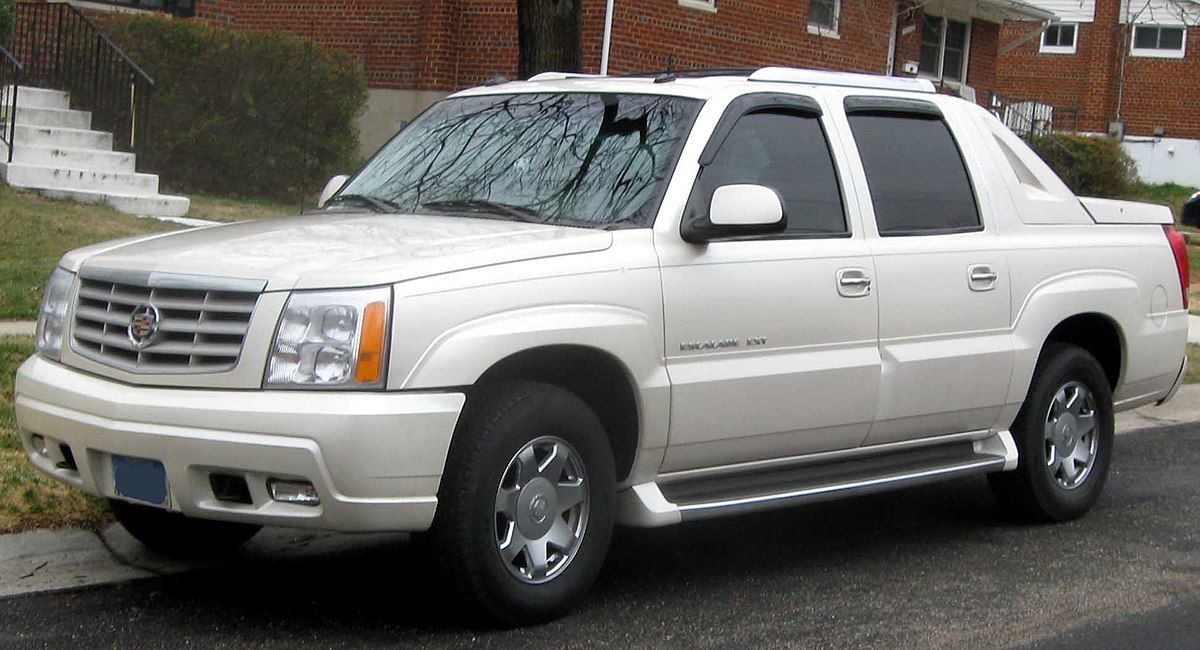
7. **Cadillac Escalade EXT**Cadillac, ever the purveyor of luxury and status, decided to tackle the truck market with an opulent twist. They believed luxury truck buyers wanted something far fancier, something that screamed “I’m rich *and* I might occasionally haul something in style.” The result was the Escalade EXT, a bold fusion of the already flashy Escalade SUV with a pickup truck bed. It was designed to be the ultimate status symbol, the king of bling.
And oh, the bling factor! It was off the charts with chrome everywhere. Rich people loved the idea of owning a truck as expensive and flashy as their SUV. The whole thing screamed nouveau riche, a rolling declaration of wealth and questionable taste.
Looking back now, however, the Escalade EXT stands as a stark monument to wasteful excess. The truck bed was almost comically useless, the fuel economy was horrible, and the whole thing screamed nouveau riche. Now it represents everything wrong with early 2000s car culture. The over-the-top luxury seems tacky and desperate rather than impressive.
Continuing our deep dive into the automotive hall of shame, we’re not done pointing fingers (mostly at ourselves, for thinking these were ever a good idea). Get ready for the next batch of rides that have spectacularly lost their luster, proving once and for all that not all trends are meant to be timeless.
Car Model Information: 2018 Honda Civic EX
Name: Cadillac Escalade
Caption: Fifth generation Cadillac Escalade
Manufacturer: Cadillac
Production: 1998–present,2002–present (ESV),2001–2013 (EXT),2008–2013 (Hybrid)
ModelYears: 1999–2000,2002–present
Class: Full-size,luxury car,sport utility vehicle
Related: ubl
Layout: Front-engine, rear-wheel drive layout,Front-engine, four-wheel drive layout
Categories: 2000s cars, 2010s cars, 2020s cars, All-wheel-drive vehicles, All Wikipedia articles in need of updating
Summary: The Cadillac Escalade is a full-size luxury SUV manufactured by General Motors and marketed by Cadillac as its first major entry into the SUV market. The Escalade was introduced for the 1999 model year in response to an influx of new luxury SUVs in the late 1990s including the Mercedes-Benz M-Class, Range Rover, Lexus LX, and Ford’s 1998 debut of the Lincoln Navigator. The Escalade project went into production only ten months after it was approved. The Escalade is built in Arlington, Texas.
The term “escalade” refers to a siege warfare tactic of scaling defensive walls or ramparts with the aid of ladders or siege towers. More generally, it is a French word which is the noun-equivalent form of the French verb escalader, which means “to climb or scale”.
The Escalade is currently sold in North America and select international markets (Europe and Asia) where Cadillac has official sales channels. The Escalade ESV (Escalade Stretch Vehicle) is sold in North America, Russia, and the Middle East, but is only available by special order in some international markets. The right-hand-drive Escalade and Escalade ESV are available through third-party conversion specialists without official agreement with Cadillac in Australian, Oceanic, and Japanese markets.
On August 8, 2023, GM presented the Escalade IQ, an all-electric version of the Escalade, and the third model in Cadillac’s EV line, after the Celestiq, and Lyriq. It is expected to go on sale in late 2024 for the 2025 model year, with a starting price of $130,000.
The Escalade has gone through five generations, the most recent (the fifth) prsented in 2021, noted for its technology and self-driving capability. The fifth generation Escalade is nearly two metres high, and was criticized by The Verge for its excessive size and hazard to pedestrians.
Get more information about: Cadillac Escalade
Buying a high-performing used car >>>
Brand: Cadillac Model: Escalade EXT
Price: $19,974 Mileage: 64,299 mi.
Read more about: Beware These Cars: 10 Models with the Highest Depreciation Rates You Need to Know About
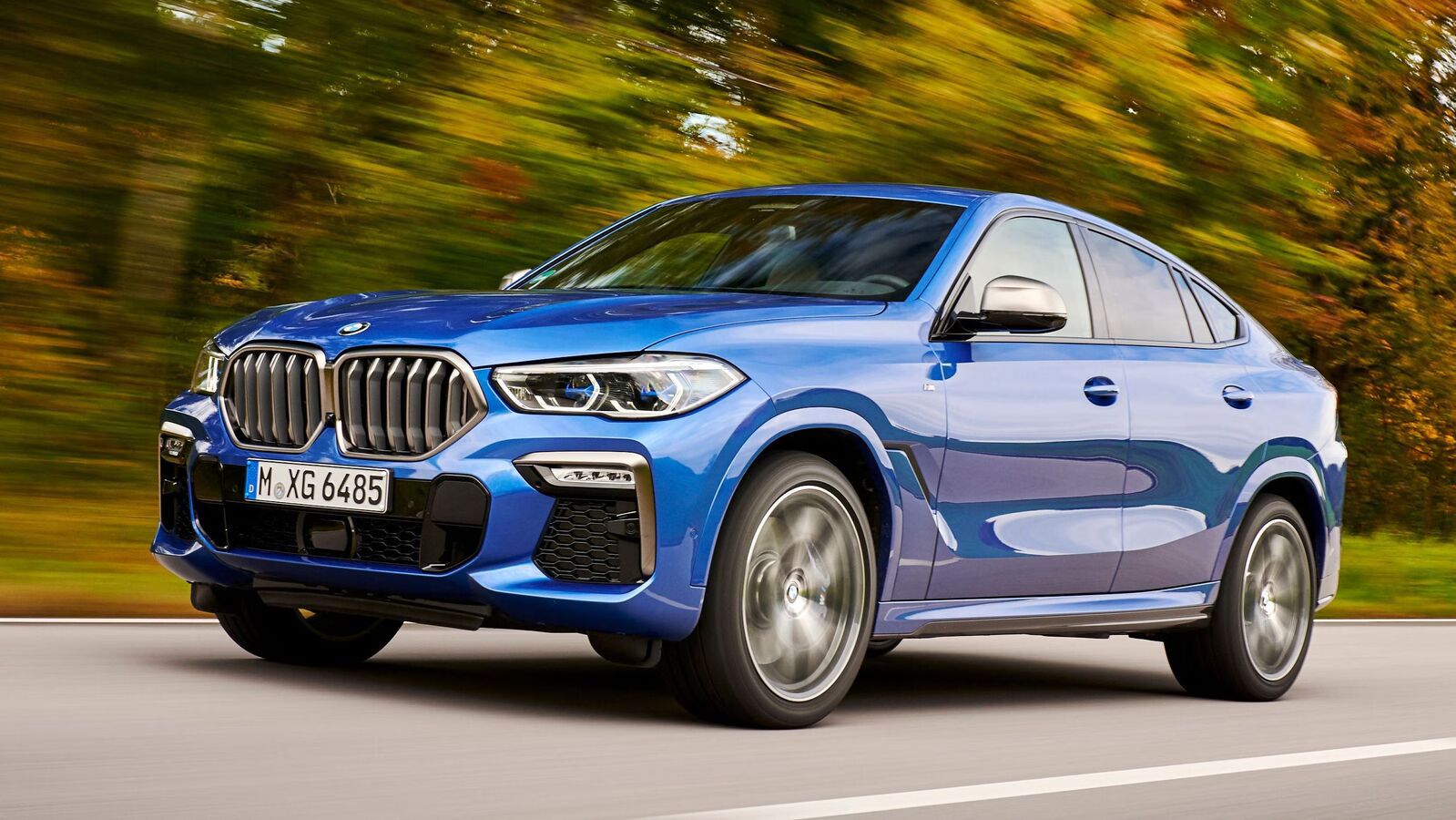
8. **BMW X6**BMW, ever the innovator, decided to shake things up by inventing a whole new category: the “coupe SUV.” When the X6 debuted, it was supposed to give drivers the best of both worlds – the robust capability of an SUV combined with the sleek, sporty elegance of a coupe. Marketing played heavily on this dual promise, and for a while, wealthy buyers were absolutely enchanted by the exclusive and expensive image it projected. It felt like a bold statement, a car for those who wanted to stand out, even if it meant creating a solution for a problem nobody really had.
However, the reality of this weird mashup was, well, a little less glamorous. That dramatically sloping roofline, intended to make it look sporty and stylish, had some serious consequences. The back seat became almost laughably unusable for adults, transforming into a cramped, awkward space. And as for cargo space, forget about it – the X6’s practicality was severely compromised, making it less useful than a standard SUV without truly delivering on the sports car agility it hinted at. It still drove like a heavy SUV, negating much of the “sports car style” promise.
Now, when you see an X6 rolling by, it just feels like BMW was desperately trying to create expensive solutions to problems that simply didn’t exist. The whole concept seems undeniably pointless and, dare we say, a bit pretentious. It’s a testament to how sometimes, trying to be everything to everyone ends up making you nothing special to anyone, especially when practicality takes a backseat to questionable aesthetics. It’s a bold fashion statement that has aged about as well as a pair of low-rise jeans.
Car Model Information: 2016 BMW X6 xDrive35i
Name: BMW X6
Caption: BMW X6 (F16)
Manufacturer: BMW
Production: December 2007 – present
ModelYears: 2008–present
Class: Executive car,crossover SUV
BodyStyle: coupé SUV
Layout: Front-engine, four-wheel-drive
Related: BMW X5
Categories: 2000s cars, 2010s cars, 2020s cars, All-wheel-drive vehicles, All articles with dead external links
Summary: The BMW X6 is a mid-size luxury crossover SUV by German automaker BMW. The BMW X6 is the originator of the sports activity coupé (SAC), referencing its sloping rear roof design. It combines the attributes of an SUV (high ground clearance, all-wheel drive and all-weather ability, large wheels and tires) with the stance of a coupé (styling featuring a sloping roof). It is built in BMW’s North American plant in Greer, South Carolina alongside the BMW X5, whose platform it shares. Prior to the release of the X7, the X6 was considered a flagship SUV for BMW.
The first generation (E71) was released for sale in April 2008 for the 2008 model year, while the second-generation X6 (F16) was launched at the Paris Motor Show in 2014. The third-generation X6 was revealed in July 2019.
Get more information about: BMW X6
Buying a high-performing used car >>>
Brand: BMW Model: X6
Price: $20,500 Mileage: 78,740 mi.
Read more about: Buyer Beware: These 10 Popular Cars Are Known Money Pits After 100,000 Miles, According to Automotive Experts
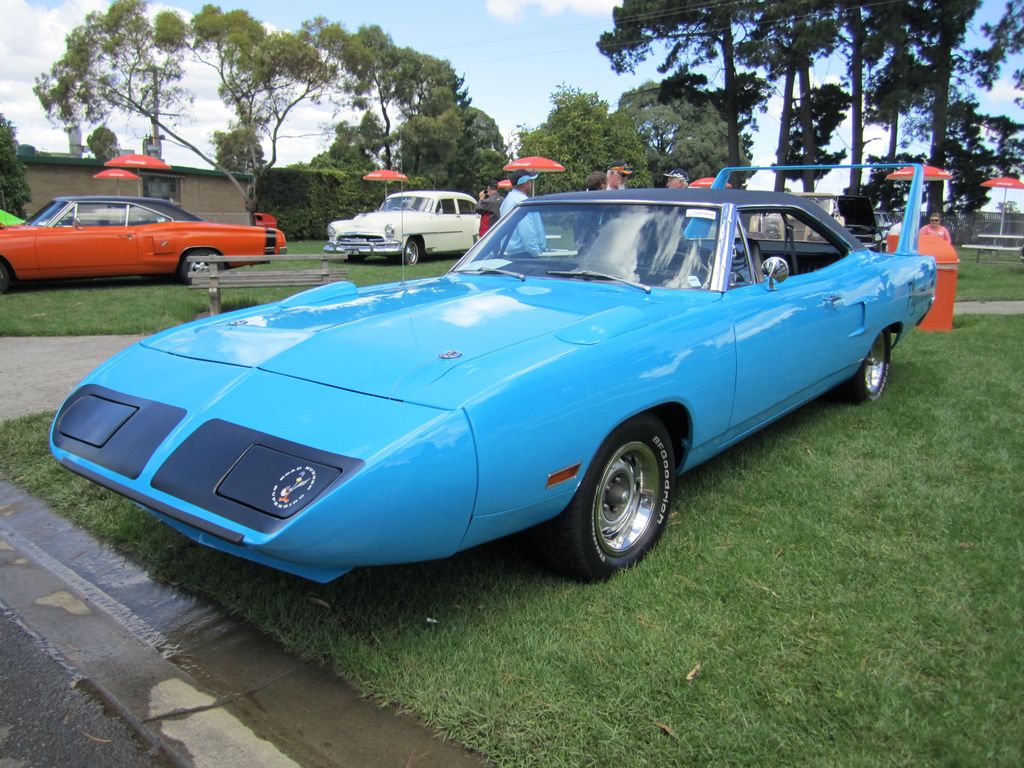
9. **Plymouth Prowler**Oh, the Plymouth Prowler. This car was a genuine head-turner when it first roared onto the scene. Plymouth desperately wanted to show off its exciting, futuristic side, and the Prowler certainly delivered on looks. With its open wheels, radical styling, and unmistakable hot rod vibe, it looked like something ripped straight from a sci-fi movie or a custom car show, not a production line. Car enthusiasts, particularly those who loved audacious design, were buzzing with excitement about an American company taking such a wild risk. Its aluminum construction and unique appearance made it feel less like a car and more like a concept vehicle you could actually take home.
But here’s where the excitement took a sharp nosedive. Once people actually got behind the wheel, they quickly discovered that the Prowler was, tragically, all show and absolutely no go. Underneath that stunning, aggressive exterior was an underwhelming V6 engine, which felt woefully inadequate for a car that looked so potent. Adding insult to injury, it came paired with a boring, mandatory automatic transmission, completely sidelining any dreams of a raw, engaging driving experience. Purists, naturally, scoffed at the lack of a proper V8 and a manual gearbox.
Now, the Prowler often looks like an expensive toy that was more concerned with making a visual statement than delivering a satisfying driving experience. Its radical styling, while still eye-catching, has aged in a way that often comes across as try-hard or, at best, a quirky relic from a forgotten design era. It’s a stark reminder that sometimes, beauty truly is only skin deep, and a fantastic look can’t always compensate for a lackluster heart. Still, you have to admire Plymouth’s sheer guts for even attempting it!
Car Model Information: 1997 Plymouth Prowler
Name: Plymouth Prowler
Manufacturer: Chrysler Corporation
Production: 1997–2002,11,702 produced
Assembly: Detroit, Michigan
Class: Sports car
Layout: Front-engine, rear-wheel-drive layout#Front mid-engine, rear-wheel-drive layout
Platform: Chrysler PR platform
BodyStyle: Roadster (automobile)
Engine: Chrysler SOHC V6 engine#3.5,V6 engine
Transmission: Ultradrive#A606/42LE,automatic transmission
Aka: Chrysler Prowler (2000–2002)
Wheelbase: 113.3 in
Abbr: on
Length: 165.3 in
Width: 76.5 in
Height: 50.9 in
Weight: 2800 lb
Successor: Chrysler Crossfire
Designer: Tom Gale (designer)
Caption: 2000 Plymouth Prowler
Categories: 2000s cars, All articles needing additional references, Articles needing additional references from November 2015, Articles with short description, Cars introduced in 1997
Summary: The Plymouth Prowler, later the Chrysler Prowler, is a two-door, two passenger sports car, manufactured and marketed by DaimlerChrysler for model years 1997-2002 — widely known for its hand-crafted aluminum bodywork and its retro-hot rod styling with open, Indy racer-style front wheels.
Based on the 1993 concept car of the same name, Chrysler offered the Prowler over a single generation, with a V6 front-engine, and a rear-transaxle, rear-drive configuration — reaching a total production of 11,702 units.
Get more information about: Plymouth Prowler
Buying a high-performing used car >>>
Brand: Plymouth Model: Prowler
Price: $34,993 Mileage: 9,424 mi.
Read more about: Beyond the Encore: 14 One-Hit Wonder Cars That Burned Brightly, Then Vanished Without a Successor
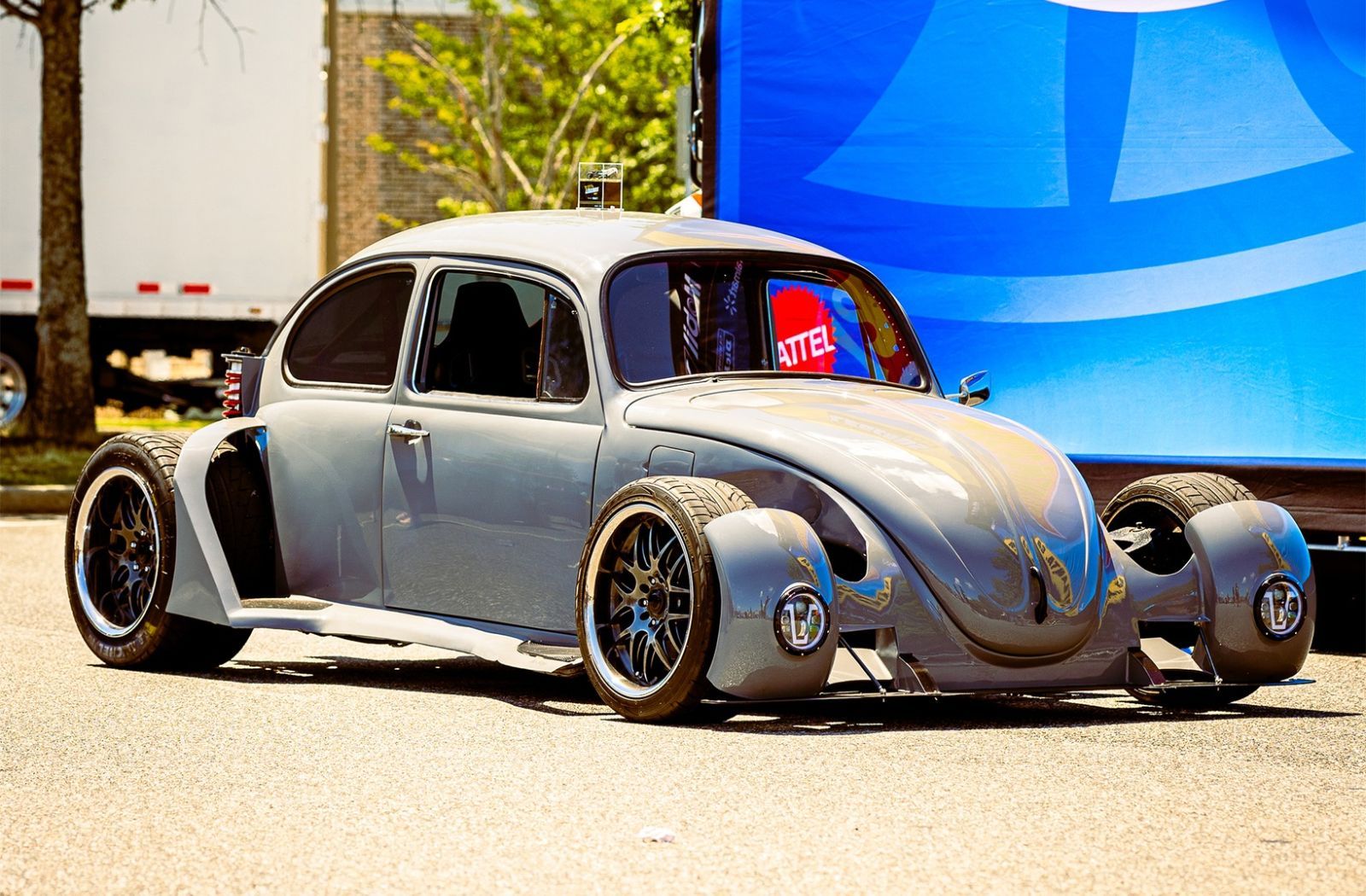
10. **Volkswagen New Beetle**Volkswagen had a brilliant idea: bring back their most famous, most beloved car, but with all the modern safety features and reliability we expect today. The New Beetle was launched with the grand ambition of recapturing the fun, carefree, and iconic spirit of the original “hippie mobile.” And for a while, it totally worked! Young women, especially, fell head over heels for its cute, friendly, rounded design, often accessorized with the undeniably charming, factory-installed flower vase. It seemed like the perfect car for anyone wanting to stand out from the endless stream of bland sedans and practical SUVs. It was an instant hit, a nostalgic hug on wheels.
However, as with many retro trends, the novelty had a rather short shelf life. What once seemed charming and delightfully quirky began to look dated, and some might even say, a bit too “girly.” The vibrant initial appeal faded as rapidly as a summer tan. The crucial issue was that men largely avoided it, seeing it as exclusively feminine, which severely limited its market appeal. Even many women eventually moved on to other, more contemporary cars as their tastes evolved and the “cute” factor wore thin.
Today, the Volkswagen New Beetle often represents a classic case of trying a little too hard to be cute and quirky, rather than focusing on being a truly great car underneath. Beneath that iconic, nostalgic shell, it was essentially a regular Golf, but with less practicality and a higher price tag. The forced nostalgia eventually lost its luster, leaving a car that now mostly serves as a reminder of a fleeting trend, rather than an enduring automotive icon. It’s a shame, because its heart was in the right place, even if its staying power wasn’t.
Car Model Information: 2018 Honda Civic EX
Name: Volkswagen New Beetle
Caption: 1998–2005 New Beetle (pre-facelift)
Manufacturer: Volkswagen
Aka: Volkswagen Beetle (Mexico),Volkswagen Bjalla (Iceland)
Production: October 1997 – July 2011
ModelYears: 1998–2010
Assembly: Wolfsburg,Puebla, Puebla,Hai Phong
Designer: J Mays
Class: Compact car
BodyStyle: hatchback
Platform: Volkswagen Group A platform#A4 (PQ34)
Related: Volkswagen Golf Mk4,Volkswagen CityJetta
Layout: Front-engine, front-wheel-drive layout,front-wheel drive,4motion,all-wheel drive
Engine: Straight-4,Multi-valve
Transmission: automatic transmission
Wheelbase: 2515 mm
Abbr: on
Length: 4129 mm
Width: 1721 mm
Height: 59.5 in
Order: flip (convertible)
Predecessor: Volkswagen Beetle
Successor: Volkswagen Beetle (A5)
Categories: 1990s cars, 2000s cars, 2010s cars, All articles with unsourced statements, Articles with short description
Summary: The Volkswagen New Beetle is a compact car introduced by Volkswagen in 1997, drawing heavy inspiration from the exterior design of the original Beetle. Unlike the original Beetle, the New Beetle has its engine in the front, driving the front wheels, with luggage storage in the rear. It received a facelift in 2005 and was in production until 2011, nearly fourteen years since its introduction.
In the 2012 model year, a new Beetle model, the Beetle (A5), replaced the New Beetle. Various versions of this model continued to be produced in Puebla, Mexico, until the final car left the assembly line on 10 July 2019.
Get more information about: Volkswagen New Beetle
Buying a high-performing used car >>>
Brand: Volkswagen Model: New Beetle
Price: $19,974 Mileage: 64,299 mi.
Read more about: Buyer Beware: These 10 Popular Cars Are Known Money Pits After 100,000 Miles, According to Automotive Experts
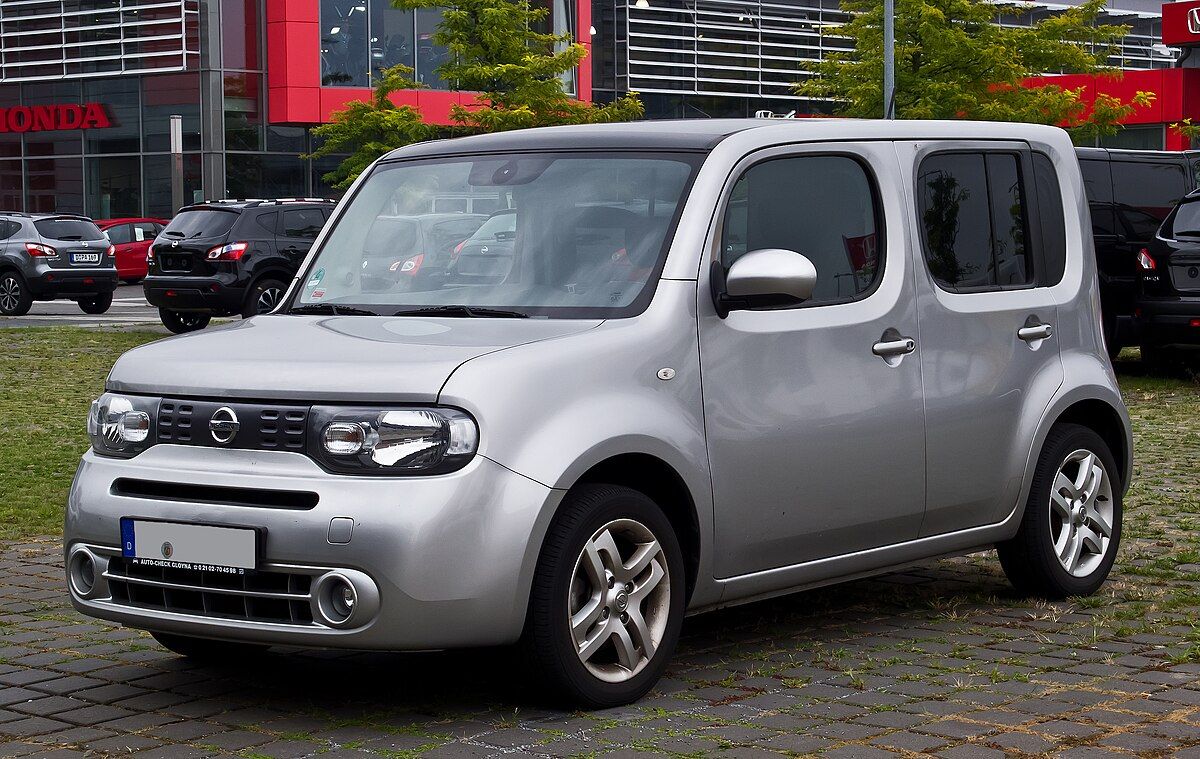
11. **Nissan Cube**Talk about a car that embraced its inner weirdo! Nissan took a huge gamble by importing this decidedly oddball, Japanese-market creation to America, fully convinced that a segment of American buyers would absolutely fall in love with its truly unconventional design. The Cube was positioned as the ultimate vehicle for creative, individualistic buyers who craved something utterly different, something that screamed “I march to the beat of my own drum.” Its asymmetrical rear window, unapologetically boxy shape, and overall bizarre proportions were all intentionally strange, aiming for a demographic that literally thought outside the box. Marketing tried to sell it as a transport for the truly unique.
But, as it often happens with such bold experiments, American buyers mostly rejected the Cube’s bizarre styling and, let’s be honest, its rather cramped interior. What Nissan envisioned as a statement of individuality often came across as just plain awkward on American roads. Compared to more conventional alternatives, the Cube felt cheap and noticeably underpowered, failing to impress with its driving dynamics. It was a clear case of cultural translation gone awry; what might have been quirky cool in Tokyo didn’t quite land with the same appeal in, say, Texas.
Now, the Nissan Cube looks less like a visionary design and more like a failed experiment in automotive eccentricity, almost a desperate plea for attention rather than genuine innovation. Its intentionally ugly design ethos, meant to be endearing, has instead made it look like an automotive relic from a time when car manufacturers were throwing everything at the wall to see what would stick. It’s a unique piece of automotive history, sure, but one that certainly didn’t achieve mainstream adoration.
Car Model Information: 2012 Nissan Cube 1.8 SL
Name: Nissan Cube
Manufacturer: Nissan
Production: 1998–2019
Assembly: Yokosuka, Kanagawa
Class: Mini MPV
BodyStyle: hatchback
Layout: Front-engine, front-wheel-drive,Front-engine, four-wheel-drive
Platform: Nissan B platform
Successor: Nissan Note#E12,Nissan Lafesta,Nissan Juke
ModelYears: 2009–2014 (North America)
Categories: 2000s cars, 2010s cars, All-wheel-drive vehicles, All Wikipedia articles needing clarification, All articles with specifically marked weasel-worded phrases
Summary: The Nissan Cube is a mini MPV produced by carmaker Nissan between 1998 and 2019. Initially sold only in Japan, the Cube was sold in North American markets from 2009 to 2014, and in European markets from 2009 to 2011. In Japan, it was exclusive to Nissan Red Stage dealerships. It is a slightly larger load-carrying alternative to the Nissan Micra hatchback. While production for the North American market ended in 2014, the Japanese-market Cube lasted until December 2019.
Get more information about: Nissan Cube
Buying a high-performing used car >>>
Brand: Nissan Model: Cube
Price: $4,495 Mileage: 119,476 mi.
Read more about: Consumer Alert: 15 Vehicles Mechanics Say You Must Avoid for Reliable, Worry-Free Driving
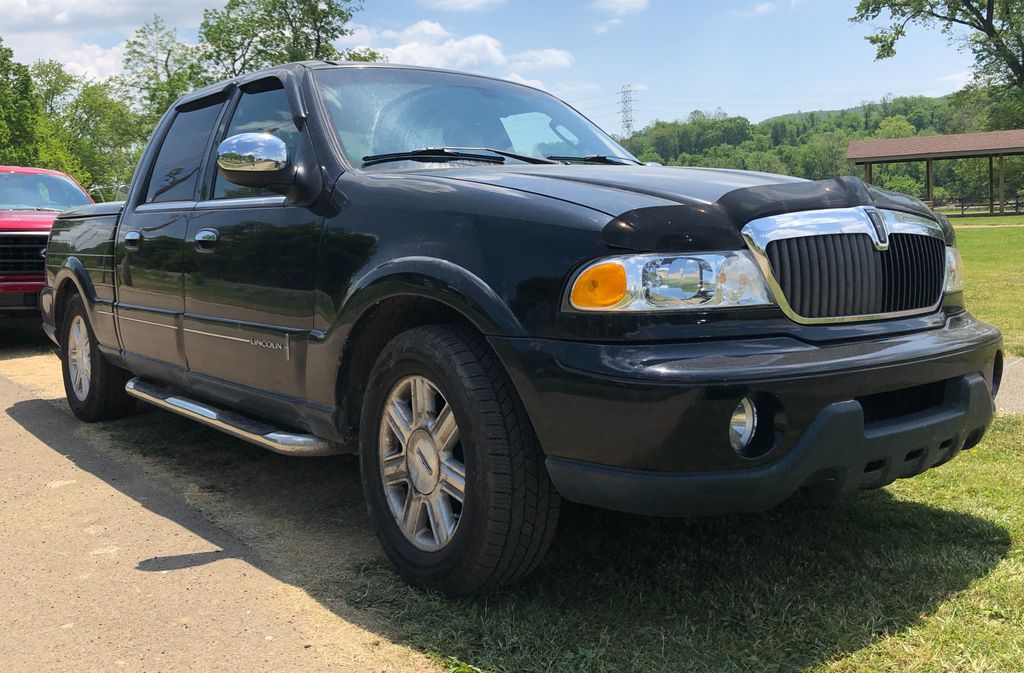
12. **Lincoln Blackwood**Lincoln, usually synonymous with classic American luxury, decided it was time to dip its polished toes into the pickup truck market. But not just any pickup – oh no. They believed that wealthy buyers, those who appreciated fine leather and chrome, would absolutely demand a truck that was far fancier and more exclusive. The result was the Blackwood, an ambitious and somewhat perplexing fusion of the stately Town Car’s elegance with the rugged utility of an F-150. It was supposed to be the ultimate luxury pickup, designed for those who needed to haul their precious cargo (presumably golf clubs or designer luggage, never anything actually dirty) in unparalleled style.
The marketing for the Blackwood targeted successful business owners who wanted truck capability without having to sacrifice an iota of luxury. It came with a carpeted truck bed and a power-operated tonneau cover, all designed to protect those expensive contents from the harsh realities of, well, being in a truck bed. It was supposed to be a bold statement of opulence, a vehicle that screamed, “I’m rich, *and* I might occasionally move something, but certainly not anything that would scratch the carpet!”
However, the entire concept was flawed from the very start. Real truck buyers, those who actually use their trucks for work or serious hauling, wanted durability and practicality, not a fancy, carpeted bed that was prone to damage. On the flip side, traditional luxury car buyers generally didn’t need trucks at all, and certainly not one with such compromised utility. The Blackwood ended up satisfying nobody, looking utterly ridiculous in its desperate attempt to be both fancy and practical. Today, it stands as a monument to Lincoln’s desperate attempt to stay relevant by creating a product that made absolutely no sense to anyone, a symbol of trying to force a square peg into a round hole, only with more chrome.
Car Model Information: 2002 Lincoln Blackwood 2WD
Name: Lincoln Blackwood
Manufacturer: Lincoln Motor Company
Production: September 25th 2000 – August 8th, 2002
ModelYears: 2002 (United States),2002–2003 (Mexico)
Assembly: Claycomo, Missouri
Successor: Lincoln Mark LT
Class: luxury car,pickup truck
BodyStyle: pickup truck
Layout: Front-engine, rear-wheel drive layout
Related: Ford F-Series (tenth generation),Lincoln Navigator
Engine: Ford Modular engine#5.4 L
Transmission: Automatic transmission
Wheelbase: 138.5 in
Abbr: on
Length: 220.2 in
Width: 78.0 in
Height: 73.6 in
Designer: Patrick Schiavone
Caption: 2002 Lincoln Blackwood
Categories: All articles with unsourced statements, Articles with short description, Articles with unsourced statements from November 2024, Cars discontinued in 2002, Cars introduced in 2001
Summary: The Lincoln Blackwood is a luxury pickup truck that was marketed by the Lincoln division of Ford Motor Company for the 2002 model year. The first pickup truck marketed by Lincoln, the Blackwood was derived from the Ford F-150 SuperCrew and the Lincoln Navigator. Drawing its name from its simulated black woodgrain cargo box, the Blackwood was offered solely with a black-painted exterior.
Although the concept vehicle had a positive public reception, the production Blackwood fell far under sales projections in the United States and Mexico. After the 2002 model year, the Blackwood was discontinued in the United States, with a short run of 2003 models produced for Mexico. In total, only 3,383 units (NOT the commonly quoted 3,356 number) were produced, making it both the rarest and shortest-produced Lincoln model line.
For 2006, Lincoln entered the pickup truck segment for a second time with the Lincoln Mark LT — again based on the Ford F-150 —which, even though it also sold poorly, was more popular than the Blackwood.
The first Lincoln vehicle manufactured exclusively outside of the state of Michigan since 1958, the Blackwood was assembled by Ford at its Kansas City Assembly facility in Claycomo, Missouri, alongside the F-150 from September 2000 to August 2002.
Get more information about: Lincoln Blackwood
Buying a high-performing used car >>>
Brand: Lincoln Model: Blackwood
Price: $14,699 Mileage: 77,219 mi.
Read more about: Automotive Echoes: The Coolest Cars That Burned Bright For Just One Year

13. **Subaru Baja**Subaru, known for its quirky but capable all-wheel-drive wagons, decided to get even quirkier with the Baja. Their idea was simple: take the reliable and beloved Outback wagon, chop off the back, and create a car-truck hybrid, or what some called a “cruck.” The Baja was pitched as the ideal vehicle for outdoorsy people, adventurers, and anyone who needed more cargo flexibility than a standard wagon, but didn’t want the bulk of a full-size pickup. With its signature all-wheel-drive and higher ground clearance, it certainly seemed capable enough to tackle some light off-road adventures, endearing it to a segment of the Subaru faithful who wanted a more versatile, truck-like option.
Unfortunately, the execution was, to put it mildly, awkward and incredibly compromised. The “truck bed” was comically tiny, offering barely more utility than the trunk of a regular wagon, rendering its truck-like aspirations almost moot. The styling looked as though someone had taken a saw to a perfectly good car, resulting in strange proportions and a generally ungainly appearance. It was neither a great truck nor a great wagon, but a strange in-between that struggled to find its identity.
Now, the Subaru Baja often looks like a solution in search of a problem, an automotive oddity that tried to blend two distinct vehicle types and ended up doing neither particularly well. The weird proportions and limited practicality make it seem less like a clever innovation and more like an automotive mistake, a well-intentioned but ultimately misguided experiment that time has not been kind to. It’s a head-scratcher that reminds us that sometimes, a good idea on paper doesn’t always translate well to the asphalt.
Car Model Information: 2005 Subaru Baja 2.5i AWD 4dr Turbo Auto w/Leather Pkg
Name: Subaru Baja
Caption: 2006 Subaru Baja Sport
Manufacturer: Subaru-Isuzu Automotive, Inc.
Production: July 2002 – April 2006
ModelYears: 2003–2006
Assembly: United States
Class: Compact SUV
BodyStyle: coupé utility
Layout: Front-engine, four-wheel-drive layout
Engine: Subaru EJ engine#EJ251,Subaru EJ engine#EJ253,Subaru EJ engine#EJ255
Transmission: Automatic transmission,Manual transmission
Wheelbase: 104.3 in
Abbr: on
Disp: flip
Length: 193.1 in
Width: 70.1 in
Height: 2003–04: {{convert,64.2,in,mm,0,abbr=on,disp=flip
Related: Subaru Legacy (third generation)
Predecessor: Subaru BRAT
Categories: All-wheel-drive vehicles, Articles with short description, Cars discontinued in 2006, Cars introduced in 2002, Commons category link from Wikidata
Summary: The Subaru Baja is an all-wheel-drive, four passenger coupé utility manufactured from 2002 to 2006 by Subaru and marketed for model years 2003 to 2006. The Baja combines the handling and passenger carrying characteristics of a traditional passenger car with the open-bed versatility and load capacity of a small pickup truck.
The unibody design borrowed heavily from the existing mechanicals, platform and sheet metal of the Subaru Legacy/Outback wagon. Production began on July 18, 2002 as a 2003 model at the Subaru of Indiana Automotive, Inc. factory in Lafayette, Indiana.
The name Baja derives from the Mexican peninsula of Baja California; home to the Baja 1000 off-road race.
Get more information about: Subaru Baja
Buying a high-performing used car >>>
Brand: Subaru Model: Baja
Price: $8,995 Mileage: 214,004 mi.
Read more about: 14 Family-Friendly Vehicles That Actually Fit Three Car Seats Across: Your Ultimate Guide
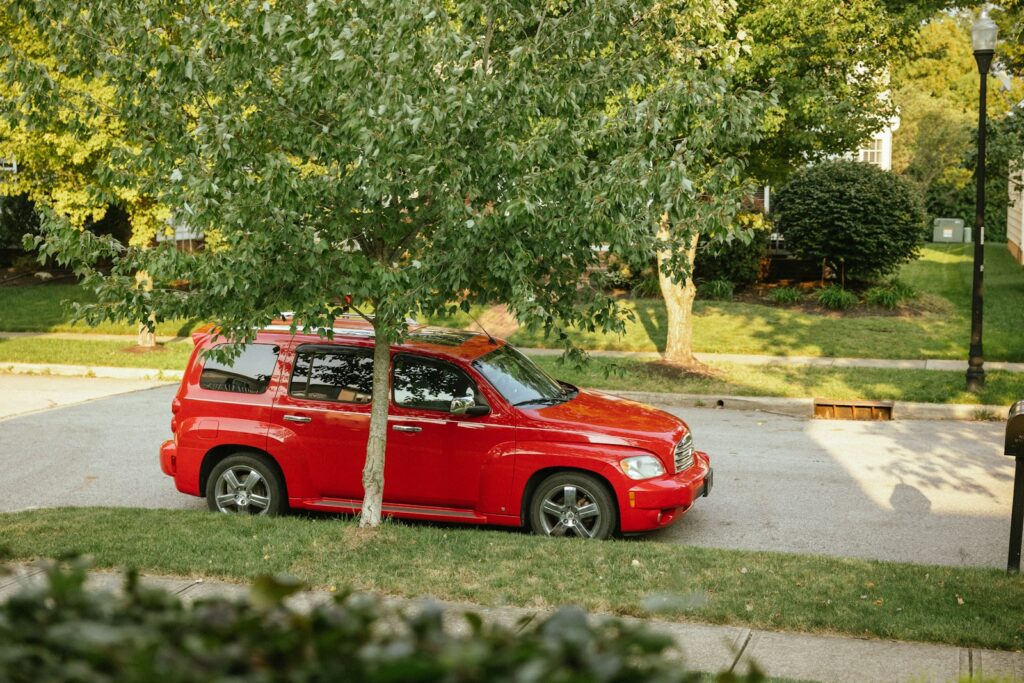
14. **Chevrolet HHR**Seeing the initial (brief) success of the Chrysler PT Cruiser, General Motors thought, “Hey, we can do that too!” And thus, the Chevrolet HHR (Heritage High Roof) was born. Its mission was to evoke the nostalgic charm of classic American delivery trucks from the 1940s, aiming for that same retro-wagon appeal that briefly captivated buyers. Chevrolet marketed it as a smart alternative to the PT Cruiser, touting its practical interior and often a lower price point, trying to hit that sweet spot of both sensibility and sentimentality. For a moment, it seemed like a plausible competitor in the burgeoning retro segment.
However, there was a rather significant problem: by the time the HHR arrived on the scene, the retro styling trend was already on its last legs, quickly dying out. What felt fresh and innovative a few years earlier now felt tired and forced. The HHR’s fake vintage look seemed even more contrived and less authentic than the PT Cruiser’s, which is saying something. Add to that questionable build quality and a generally uninspired driving experience, and the HHR quickly faded into obscurity. It felt like a car that arrived too late to the party, bringing a costume that everyone else had already worn last year.
Today, the Chevrolet HHR looks less like a clever nostalgic nod and more like a cheap copy of an already bad, and rapidly aging, idea. The awkward proportions, the plastic-heavy interior, and the overall impression of a vehicle designed as an afterthought make it seem like something nobody truly wanted or asked for. It’s a sad reminder that timing is everything in the fickle world of automotive trends, and sometimes, it’s best to let sleeping trends lie.
Car Model Information: 2006 Chevrolet HHR LT
Name: Chevrolet HHR
Manufacturer: General Motors
Production: 2005–2011
ModelYears: 2006–2011
Assembly: Ramos Arizpe,Coahuila
Designer: Bryan Nesbitt
Class: Compact car
BodyStyle: station wagon
Platform: GM Delta platform
Successor: Opel Antara
Layout: Front-engine, front-wheel-drive layout
Engine: ubl
Abbr: on
Transmission: F35 (MU3) transmission,manual transmission
Wheelbase: 2630 mm
Length: 4475 mm
Width: 1755 mm
Height: 1605 mm
Categories: 2010s cars, All Wikipedia articles written in American English, All articles with unsourced statements, Articles with short description, Articles with unsourced statements from July 2007
Summary: The Chevrolet HHR (an initialism for Heritage High Roof) is a retro-styled, high-roofed, five-door, five-passenger, front-wheel drive wagon designed by Bryan Nesbitt and launched by the American automaker Chevrolet at the 2005 Los Angeles Auto Show as a 2006 model.
The HHR shares the GM Delta platform with the Chevrolet Cobalt, Pontiac G5, and Saturn Ion. Chevrolet also marketed a panel van variant of the HHR beginning in 2007. Assembled in Ramos Arizpe, Mexico and marketed throughout North America, production of the HHR ended in May 2011. The HHR was replaced in the U.S. by the Chevrolet Captiva Sport, a rebadged version of the Opel Antara. However, the Captiva Sport was only available as a fleet vehicle and was not available new to the general public.
Get more information about: Chevrolet HHR
Buying a high-performing used car >>>
Brand: Chevrolet Model: HHR
Price: $4,000 Mileage: 150,000 mi.
Read more about: 15 Cars That Become Costly Money Pits After 100,000 Miles: Essential Insights for Savvy Buyers
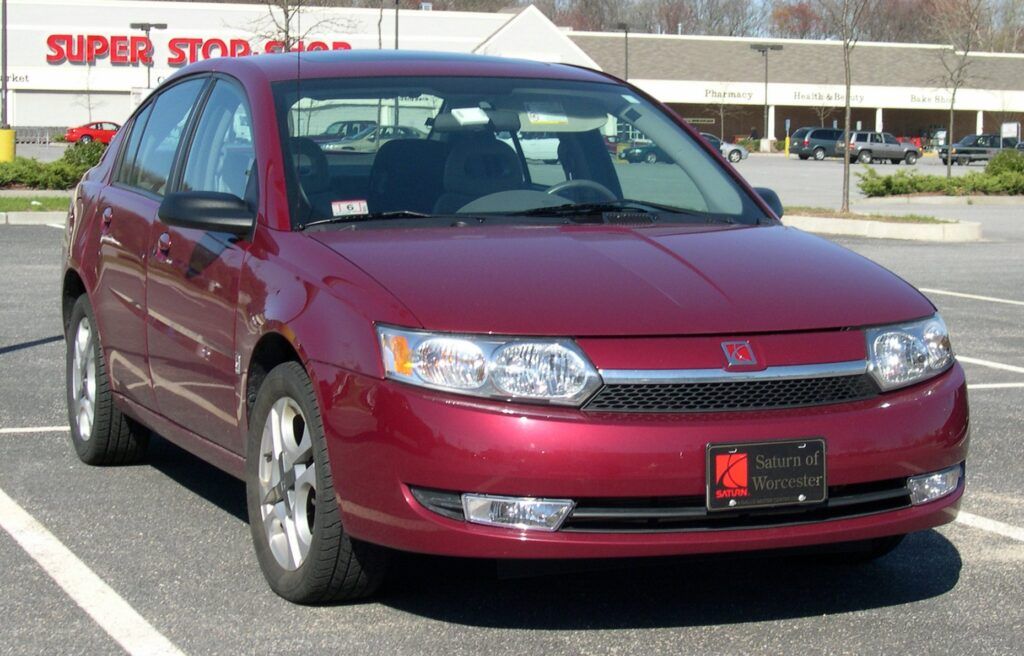
15. **Saturn Ion**Ah, the Saturn Ion. This compact car was meant to be a game-changer, a crucial part of Saturn’s ambitious plan to reinvent their brand and shed their somewhat quirky, “no-haggle” image for something more sporty and modern. The Ion certainly tried to stand out with its unusual styling, and it even offered a performance-oriented Red Line version to appeal to enthusiasts. One of its most distinctive features was the center-mounted instrument cluster, a design choice intended to be futuristic and more driver-focused, challenging conventional layouts. Saturn’s marketing positioned it as the perfect car for young professionals who wanted something distinctly different from the competition.
But, like so many ambitious automotive dreams, the Ion stumbled hard. That “futuristic” center-mounted dashboard layout, instead of being innovative, mostly confused everyone who drove it. It felt awkward and unintuitive, actively detracting from the driving experience rather than enhancing it. Beyond that, the build quality was, frankly, terrible, quickly eroding any goodwill the brand had. And the styling, which aimed for modern and distinct, instead looked cheap and dated almost immediately after its release, failing to capture the sleek, contemporary aesthetic it aspired to.
Now, the Saturn Ion stands as a stark representation of Saturn’s failed attempt to transition into a mainstream brand, losing sight of the unique identity that initially drew buyers. It looks like a car designed by people who simply didn’t understand what buyers actually wanted from a small car – a blend of reliability, practicality, and appealing aesthetics, none of which the Ion delivered consistently. It’s a poignant reminder of a brand that tried to evolve but ultimately lost its way, leaving behind a car that evokes more “what were they thinking?” than “remember how cool that was?”
***
Car Model Information: 2006 Saturn Ion 3
Name: Saturn Ion
Caption: 2005–07 Ion (facelift)
Manufacturer: Saturn Corporation
Production: 2002–March 29, 2007
ModelYears: 2003–2007
Assembly: Spring Hill, Tennessee
Class: Compact car
BodyStyle: sedan (automobile)
Platform: GM Delta platform
Related: Chevrolet Cobalt,Chevrolet HHR,Pontiac G5,Opel Astra
Layout: Front-engine, front-wheel-drive layout
Engine: Liter,GM Ecotec engine#L61,Straight-four engine
Transmission: Getrag,Getrag F23 transmission
Wheelbase: 103.2 in
Abbr: on (Red Line)
Length: 184.5 in
Width: 67.2 in
Height: 57.4 in
Weight: convert
Predecessor: Saturn S-Series
Successor: Saturn Astra
Categories: Articles with short description, Cars discontinued in 2007, Cars introduced in 2002, Commons category link is on Wikidata, Compact cars
Summary: The Saturn Ion is a compact car sold by Saturn between the 2003 and 2007 model years. Based on the GM Delta platform, the Ion replaced the Saturn S-Series in 2002,
and was replaced by the new Saturn Astra in 2008. Production of the Ion ended on March 29, 2007. The Ion was the last Saturn passenger car built at the Spring Hill, Tennessee, plant which was originally linked to the company’s branding, with Saturn owners attending “homecoming” events at the plant.
Get more information about: Saturn Ion
Buying a high-performing used car >>>
Brand: Saturn Model: Ion
Price: $2,888 Mileage: 337,000 mi.
Read more about: 15 Cars That Become Costly Money Pits After 100,000 Miles: Essential Insights for Savvy Buyers
So, there you have it – a rollercoaster ride through the automotive past, filled with cars that once had us convinced they were the next big thing, only to end up as undeniable symbols of a bygone era’s questionable taste. From quirky attempts at retro-cool to audacious luxury experiments and sporty misfires, these vehicles serve as hilarious, slightly embarrassing reminders of how quickly automotive trends can shift. What’s considered “it” today can very easily become “ew” tomorrow. But hey, at least we can all laugh about it now, right? It just goes to show, whether it’s fashion, music, or cars, sometimes the best way to predict the future is to just enjoy the present (and maybe think twice before buying that next “cutting-edge” design). These cars might be cringe now, but they certainly give us plenty to talk about, and isn’t that what pop culture is all about?


